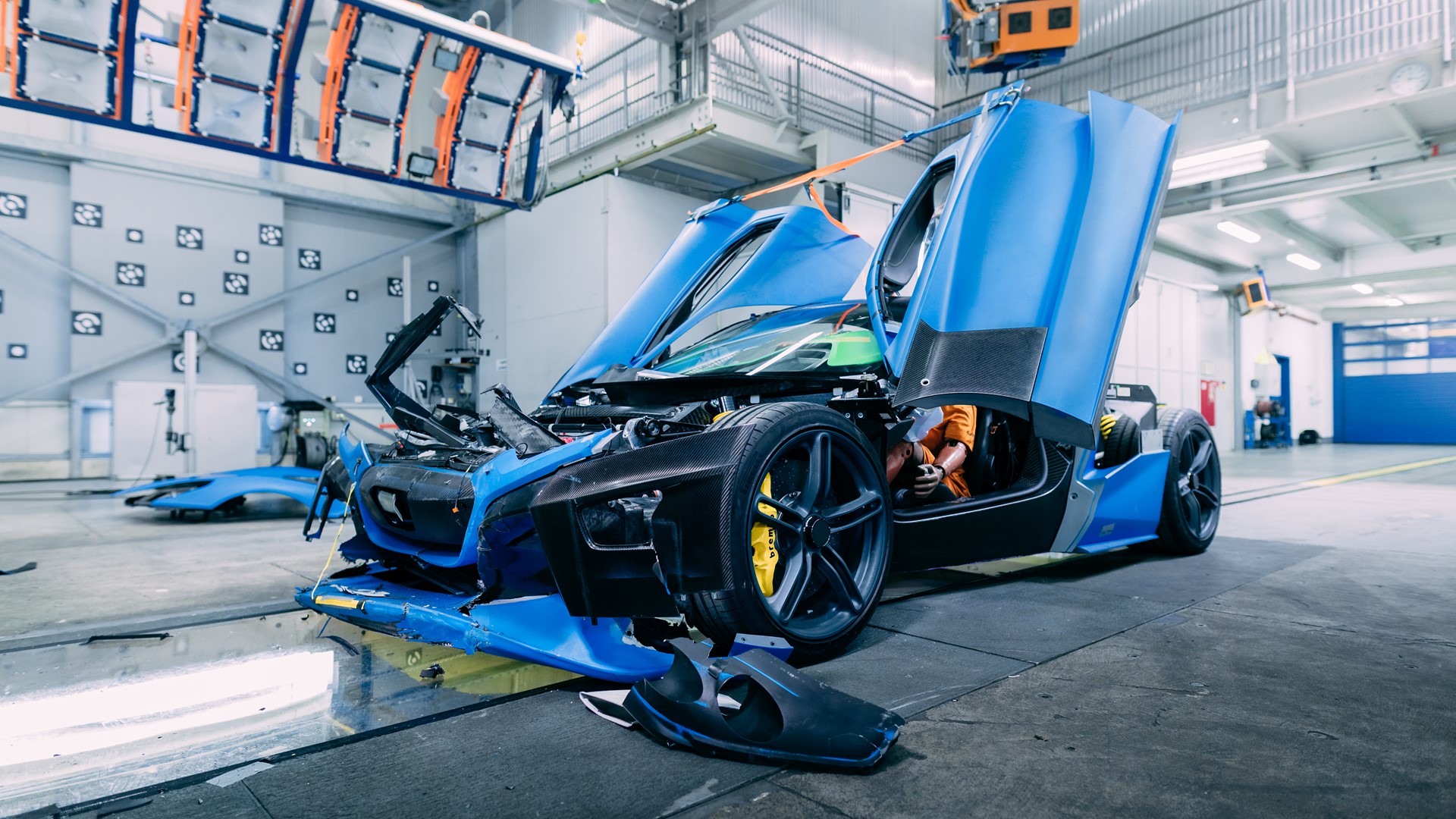In order for the insanely powerful C_Two electric hypercar (remember, it has 1,888hp / 1,914PS ) to be homologated globally, Rimac has to first make sure that it meets all performance, durability and reliability standards, not just safety-related tests.
Unfortunately for those of us fond of beautiful hypercars, this process also includes real-world crash testing, because simulating these types of events on a computer can only get you so far. Besides, Rimac’s goal is for its cars to be safe and road-legal worldwide.
According to the EV-maker, a fully-fledged homologation process, without taking any shortcuts, can take three to four years as you go from concept to prototype to road car.
Also read: Porsche Increases Its Stake In Rimac To 15.5 Percent
The first step is to run simulations and develop the car with the help of computers. Next come the material and components tests, which precede the vehicle testing program which requires actual experimental prototypes. Then come the testing validation prototypes, pre-production prototypes and of course the final product.
As far as the battery-powered C_Two (of which only 150 units will be made) is concerned, it has just aced its first round of crash tests, which means Rimac can now proceed to the next stage of development, which is to “further improve our design together with perfecting the correlations of our virtual simulations.”
It’s interesting how Rimac used the same monocoque on the experimental prototype for five types of crash tests, before realizing that they could also perform a sixth test involving roof strength.
Crashing the same prototype (or car) over and over again is never a pretty sight, but that’s life when you’re a small-volume manufacturer – just ask Koenigsegg.







